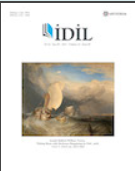ANADOLU EDVAR GELENEĞİ YAKLAŞIMIYLA MAKAMI OLUŞTURAN TEMEL İLKE VE ÖĞELER, HİCAZ PERDE DÜZENİNDEN DOĞAN OTUZ YEDİ MAKAM
THE FUNDAMENTAL PRINCIPLES AND ELEMENTS CONSTITUTING OF THE MAKAM CONCEPT WITH THE ANATOLIAN EDVAR TRADITION, THE THIRTYSEVEN MAKAMS ARISING FROM THE HİCAZ DÜZEN (HİCAZ GAMUT)
Author(s): Murat GÜRELSubject(s): Cultural history, Customs / Folklore, Music, 15th Century, History of Art
Published by: Sanat ve Dil Araştırmaları Enstitüsü
Keywords: Traditional Turkish Music; Turkish Music Theory; Anatolian Edvar Tradition; Makam; Hicaz; Gamut;
Summary/Abstract: The Anatolian Edvar Tradition is an ecole emerging in the 15th century which views Turkish music theory as emanating from the relationships between notes, and its pedagogical approach comprises practical and brief descriptions. In this movement-based approach, the notes become melodic development (melodic shape) of the makam concept (transformative approach), aiming to explain and demonstrate performance. The research is descriptive and based on a general survey model, aiming to conduct a substantial literature review and establish determining the current state of the theory. It will describe the four basic principles of the notion of makam in the Anatolian Edvar Tradition approach, that is, düzen (gamut), centralizations which typically occur at the beginning/center note, melodic development, and resolve note/endings. Furthermore, explanations are offered with regard to the elements that make up makams, the traditional names of notes, and the approach where notes are named after the makams based on them. The emergence of makams from the Rast düzen (Rast gamut) and of different düzens from the Rast düzen are exemplified. Thirty-seven makams arising from the Hicaz düzen (Hicaz gamut) are investigated under seven different makam families, and descriptions of makams drawn from historical sources are given. Based on these descriptions, basic melodic developments are formulated for each makam, and theoretical analysis of these examples is made. In conclusion, the fundamental principles and elements of the makam concept with the Anatolian Edvar Tradition are explained from an instructive perspective, and the makam descriptions, theoretical analysis method are simplified, explicated, and instantiated based on performance.
Journal: İdil Sanat ve Dil Dergisi
- Issue Year: 10/2021
- Issue No: 85
- Page Range: 1376-1409
- Page Count: 34
- Language: Turkish

